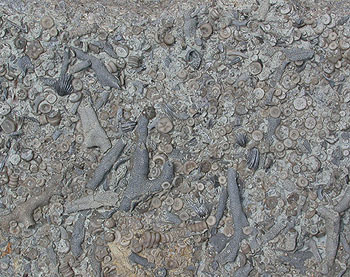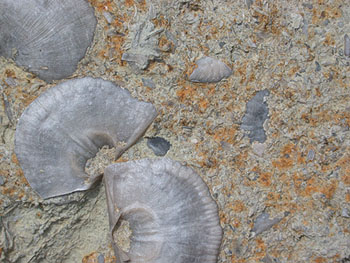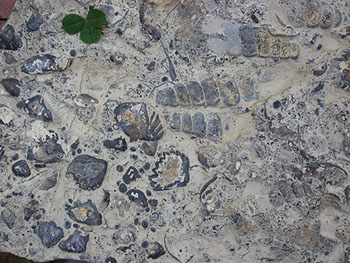|
This fossiliferous limestone is dominated by crinoids (which look like little buttons) and bryozoans (the branched pieces). There are also a few brachiopod shells in this nice sample.
|

|
|
The big fossils here are brachiopod shells. You can see other bioclastic debris elsewhere in this sample. The matrix that holds it all together is micrite. Thus, these fossils were preserved in carbonate mud.
|

|
|
Here again we see bioclastic debris preserved in ancient lime mud. Most of the dark fossils are brachiopods in various states of preservation. The pair of light gray fossils that taper to one end are snail fossils cut through the middle by erosion.
|

|
|
This bioclastic limestone preserves the remains of the world's first attempts at reefs. The light gray fossils are archaeocyathids of Early Cambrian age (~540 Myr). They were probably similar to sponges, but they were only briefly successful in the history of life. They went extinct by the end of the Middle Cambrian.
|
|
|
This bioclastic limestone is packed with fusulinids. These single-celled creatures reached sizes of 1 to 2 cm in this rock .
|
|





